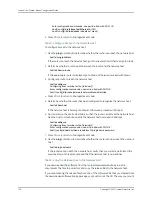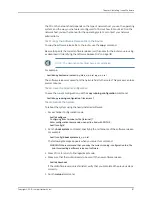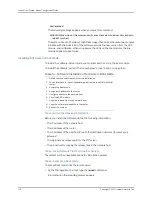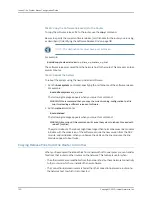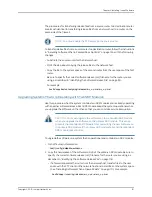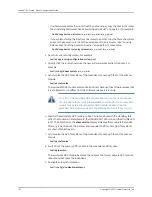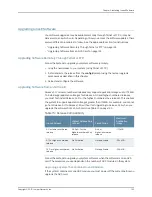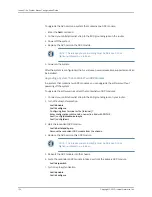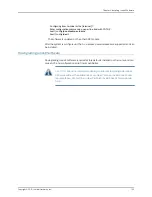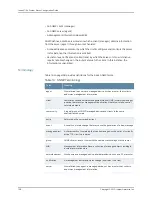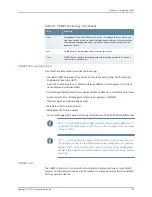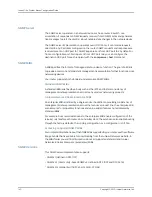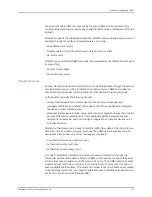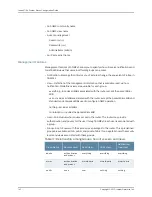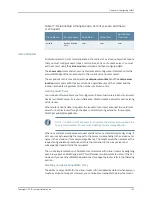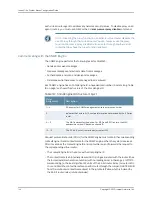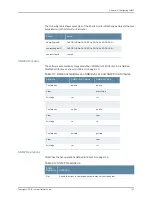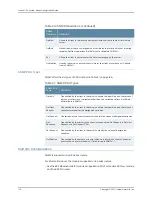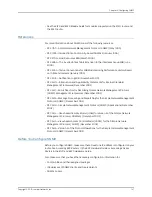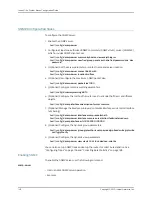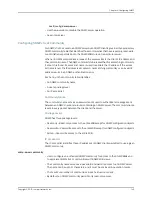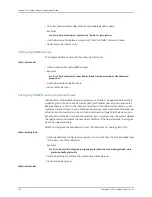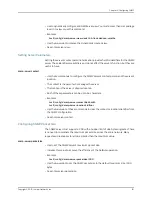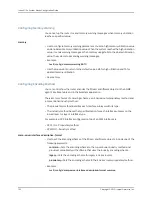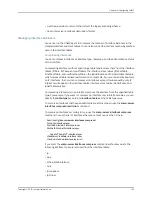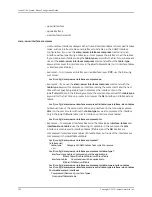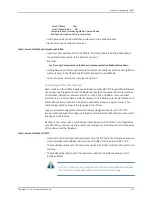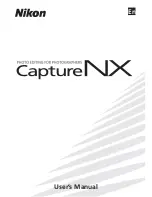
SNMP Server
The SNMP server operates on a network device, such as a router, a switch, or a
workstation. It responds to SNMP requests received from SNMP clients and generates
trap messages
to alert the client(s) about notable state changes in the network device.
The SNMP server implementation operates over UDP/IP only. It can receive requests
directed to any IP address configured on the router. SNMP requests and responses are
received or sent on UDP port 161. SNMP traps are sent from UDP port 162 by default or
from a configurable port. For traps sent from UDP port 162, you can configure the
destination UDP port for each recipient with the
snmp-server host
command.
SNMP MIBs
A MIB specifies the format of managed data for a device function. The goal of a MIB is
to provide a common and consistent management representation for that function across
networking devices.
Your router supports both standard and enterprise SNMP MIBs.
Standard SNMP MIBs
A standard MIB is defined by a body such as the IETF and fosters consistency of
management data representation across many vendors’ networking products.
Juniper Networks E Series Enterprise MIBs
An enterprise MIB is defined by a single vendor. In addition to providing consistency of
management data representation across that vendor’s product line, the enterprise MIB
also accounts for proprietary functions and value-added features not addressed by
standard MIBs.
For example, boot record extensions to the enterprise MIB enable configuration of the
release (.rel) files for each router, slot, and subsystem. The extensions also enable booting
through the factory defaults, the running configuration, or a configuration (.cnf) file.
Accessing Supported SNMP MIBs
For complete information about the SNMP MIBs supported by your router, see the software
image bundle that is available for downloading from the Juniper Networks website. In
the MIBs folder you will find information about all supported standard and Juniper
Networks E Series Enterprise (proprietary) MIBs.
SNMP Versions
This SNMP server implementation supports:
•
SNMPv1 (defined in RFC 1157)
•
SNMPv2c (Community-based SNMPv2, defined in RFC 1901 and RFC 3416)
•
SNMPv3 (compliant with RFCs 3410–3418, STD 62)
Copyright © 2010, Juniper Networks, Inc.
140
JunosE 11.3.x System Basics Configuration Guide
Содержание JUNOSE 11.3
Страница 6: ...Copyright 2010 Juniper Networks Inc vi...
Страница 8: ...Copyright 2010 Juniper Networks Inc viii JunosE 11 3 x System Basics Configuration Guide...
Страница 24: ...Copyright 2010 Juniper Networks Inc xxiv JunosE 11 3 x System Basics Configuration Guide...
Страница 32: ...Copyright 2010 Juniper Networks Inc 2 JunosE 11 3 x System Basics Configuration Guide...
Страница 146: ...Copyright 2010 Juniper Networks Inc 116 JunosE 11 3 x System Basics Configuration Guide...
Страница 166: ...Copyright 2010 Juniper Networks Inc 136 JunosE 11 3 x System Basics Configuration Guide...
Страница 432: ...Copyright 2010 Juniper Networks Inc 402 JunosE 11 3 x System Basics Configuration Guide...
Страница 488: ...Copyright 2010 Juniper Networks Inc 458 JunosE 11 3 x System Basics Configuration Guide...
Страница 524: ...Copyright 2010 Juniper Networks Inc 494 JunosE 11 3 x System Basics Configuration Guide...
Страница 554: ...Copyright 2010 Juniper Networks Inc 524 JunosE 11 3 x System Basics Configuration Guide...
Страница 566: ...Copyright 2010 Juniper Networks Inc 536 JunosE 11 3 x System Basics Configuration Guide...
Страница 588: ...Copyright 2010 Juniper Networks Inc 558 JunosE 11 3 x System Basics Configuration Guide...
Страница 613: ...PART 3 Index Index on page 585 583 Copyright 2010 Juniper Networks Inc...
Страница 614: ...Copyright 2010 Juniper Networks Inc 584 JunosE 11 3 x System Basics Configuration Guide...
Страница 632: ...Copyright 2010 Juniper Networks Inc 602 JunosE 11 3 x System Basics Configuration Guide...

